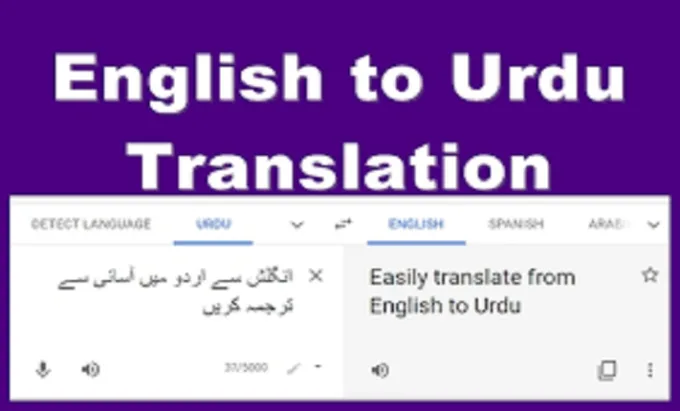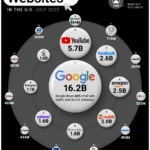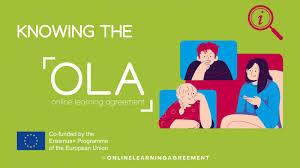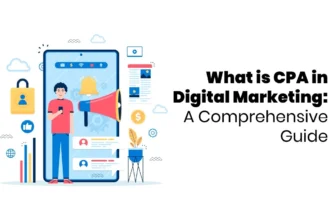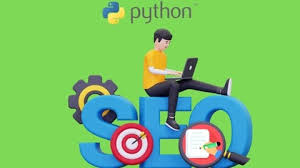The digital age has blurred geographical boundaries, transforming the world into a vast, interconnected marketplace. For ambitious marketers, this presents an unprecedented opportunity: to reach audiences far beyond their traditional linguistic and cultural spheres. Yet, this global ambition often encounters a formidable barrier – language. While English may dominate much of the internet, ignoring the rich tapestry of other languages, like Urdu, means overlooking millions of potential customers, partners, and advocates.
Consider the burgeoning digital landscape in Pakistan, where Urdu is the national language and spoken by over 100 million people. Tapping into this market, or any other non-English speaking territory, requires more than just a passing familiarity with translation. It demands precision, cultural nuance, and an understanding of how to communicate your brand message authentically. Many marketers instinctively turn to Google Translate, and while it serves as a fantastic starting point for quick comprehension, its limitations for professional, brand-critical communication are significant. This isn’t about simple word-for-word conversion; it’s about transcreation – adapting content to resonate culturally and emotionally.
In today’s fast-paced environment, where content is king and global reach is paramount, relying solely on basic tools can be a marketing misstep. The good news is that the realm of “Urdu to English translation online” has evolved dramatically, offering sophisticated solutions that empower marketers to bridge linguistic divides with confidence and strategic intent. This deep dive will guide you through the intricacies of professional online translation for marketers, moving beyond Google Translate to explore five expert-level tools that can elevate your global marketing efforts.
The Indispensable Role of Advanced Translation for Modern Marketers
In an increasingly globalized economy, a brand’s ability to communicate effectively across languages is not just a nice-to-have; it’s a strategic imperative. Marketers today face immense pressure to deliver impactful campaigns that resonate with diverse audiences, drive engagement, and convert leads, regardless of their native tongue. Here’s why advanced translation is no longer optional:
Reaching Untapped Markets
The internet’s reach is universal, but its content often isn’t. Many markets are underserved by English-only content. By providing high-quality, localized content in languages like Urdu, marketers can access entirely new customer segments. This isn’t just about translating a website; it’s about localizing product descriptions, marketing campaigns, social media posts, customer support, and even SEO strategies for local search engines. The journey of global expansion often begins with the precise translation of foundational marketing materials.
Enhancing Brand Credibility and Trust
Imagine landing on a website with poorly translated, awkward phrasing. What does that communicate about the brand? Conversely, perfectly localized content demonstrates respect for the audience’s language and culture. It builds trust and establishes credibility, signaling that your brand genuinely understands and values its international customers. For businesses looking to establish a strong global footprint, presenting polished and culturally appropriate content is paramount.
Driving SEO Performance in Local Markets
Effective Urdu to English translation online for marketing content isn’t just about language; it’s deeply intertwined with Search Engine Optimization (SEO). Keywords, search queries, and content relevance vary significantly across cultures and languages. A literal translation of English keywords might yield poor results in Urdu. Professional translation tools, especially those integrated with human review, allow for transcreation of keywords, ensuring that your content ranks highly for relevant terms in target markets. Marketers must think beyond direct translation and consider how users in a specific region search for products or services. Neglecting this means losing out on organic traffic and potential customers.
Maintaining Brand Consistency and Voice
A brand’s voice and messaging are meticulously crafted. Automated tools often struggle to capture these subtle nuances, resulting in translations that sound generic, robotic, or even misrepresent the brand’s intended tone. Professional translation solutions offer features like glossaries, style guides, and translation memories, ensuring that your brand’s unique voice, terminology, and messaging remain consistent across all translated content, regardless of the language. This consistency is vital for maintaining a cohesive brand identity globally.
Efficiency and Scalability
Manually translating large volumes of marketing content is slow, expensive, and prone to human error. Advanced online translation tools leverage machine learning and artificial intelligence to significantly speed up the translation process, making it scalable for businesses with extensive content libraries. While human oversight remains crucial for quality assurance, these tools automate the bulk of the work, freeing up resources and accelerating time-to-market for international campaigns. The ability to rapidly adapt and deploy content in multiple languages is a significant competitive advantage in today’s fast-moving digital landscape.
The Evolving Landscape of Online Translation: More Than Just Word-for-Word
The world of online translation has undergone a seismic shift, largely driven by advancements in artificial intelligence (AI) and machine learning. What began as rudimentary, rule-based systems has transformed into sophisticated neural networks capable of understanding context, nuance, and even emotional tone.
The Dawn of AI and Machine Learning in Translation
At the heart of this revolution is what is machine learning and its more advanced cousin, deep learning. Traditional translation methods often relied on statistical models or direct word-for-word substitutions, leading to stiff, inaccurate, and often comical results. Modern machine translation (MT) systems, particularly neural machine translation (NMT), operate differently. They process entire sentences, even paragraphs, as a single unit, identifying complex patterns and relationships between words, phrases, and grammatical structures across languages. This approach allows them to generate much more natural-sounding and contextually appropriate translations.
When we talk about “online machine learning” in translation, we’re referring to systems that continuously learn and improve. As more data (high-quality human translations) is fed into these models, their accuracy and fluency increase exponentially. This iterative process of learning means that the quality of tools offering Urdu to English translation online is constantly improving, becoming more adept at handling the complexities of idiomatic expressions, cultural references, and varied linguistic structures unique to Urdu and English.
Human-in-the-Loop vs. Pure MT: A Strategic Choice
While AI has made incredible strides, for critical marketing content, a “pure MT” approach often isn’t enough. This is where the “human-in-the-loop” model becomes invaluable. This strategy combines the speed and scalability of machine translation with the precision and cultural sensitivity of professional human translators.
- Pure MT: Best for high-volume, low-impact content where speed and cost are paramount, and minor errors are acceptable (e.g., internal communications, general informational content).
- Human-in-the-Loop (Post-Edited Machine Translation – PEMT): The machine does the heavy lifting, generating a draft translation, which is then reviewed, edited, and refined by a human linguist. This approach strikes a balance between speed, cost, and quality, making it ideal for marketing materials where brand voice, accuracy, and cultural appropriateness are crucial. It ensures that the output is not just grammatically correct but also culturally relevant and persuasive.
Current Trends and Daily Relevance in Translation Technology
The translation industry is dynamic, with daily advancements pushing the boundaries of what’s possible. Marketers leveraging online learning platforms to stay abreast of these trends will gain a significant competitive edge.
- Real-time Communication: The demand for instant translation in customer service chatbots, live chat support, and virtual meetings is growing. While not yet perfect, real-time MT is becoming increasingly sophisticated, allowing for more seamless global interactions.
- Integration with Marketing Stacks: Modern translation tools are designed to integrate directly with Content Management Systems (CMS), Customer Relationship Management (CRM) platforms, and marketing automation tools. This streamlines workflows, allowing for automated content translation and publication, and a more cohesive global marketing strategy.
- Personalized Content at Scale: As AI gets better at understanding user preferences, translation tools can help marketers deliver personalized content experiences in different languages, adapting not just the language but also the messaging and offers to individual cultural contexts.
- Voice and Video Translation: Beyond text, AI is rapidly advancing in translating spoken language in videos, podcasts, and virtual events, opening up new avenues for global content dissemination. This means that a webinar initially delivered in English could soon be accurately dubbed or subtitled in Urdu with minimal human intervention.
- Ethical AI and Bias Mitigation: As translation models learn from vast datasets, there’s an ongoing effort to address and mitigate biases present in training data, ensuring translations are fair, inclusive, and culturally sensitive. This is a critical area for “online machine learning” to evolve.
These developments highlight why marketers need to move beyond Google Translate and embrace the sophisticated tools that are shaping the future of global communication. Staying informed through various online learning courses or an online learning hub about these technological shifts is key to leveraging them effectively.
The Google Translate Conundrum: A Starting Point, Not a Destination
For many, Google Translate is the first, and often only, port of call for any translation need. Its ubiquity, ease of use, and instant results make it incredibly appealing. It serves an invaluable purpose for personal comprehension – quickly understanding a foreign email, deciphering a sign, or getting the gist of a news article. For a quick Urdu to English translation online to understand a phrase, it’s remarkably efficient.
However, for professional marketing, Google Translate presents significant challenges that can undermine your brand and efforts:
- Lack of Contextual Nuance: Google Translate, despite its advancements, often struggles with context. It translates words and phrases literally, missing the underlying meaning, cultural implications, or idiomatic expressions that are crucial in marketing. A direct translation might be grammatically correct but entirely inappropriate or ineffective for a specific target audience.
- Inconsistent Tone and Brand Voice: Marketing relies heavily on tone – whether it’s humorous, authoritative, empathetic, or innovative. Google Translate cannot consistently replicate a specific brand voice. This can lead to a fragmented brand identity across different languages, making your marketing feel disjointed and unprofessional.
- Poor SEO Performance: As mentioned, literal translation of keywords doesn’t work for SEO. Google Translate doesn’t optimize for search intent or cultural search patterns in the target language. This means your carefully crafted English SEO strategy could fall flat in Urdu-speaking markets if solely relying on automated, unedited translations.
- Cultural Insensitivity and Errors: A misplaced word or an inaccurate translation can lead to significant cultural misunderstandings, potentially offending your target audience or making your brand appear ignorant. For example, a marketing slogan that sounds clever in English could be meaningless or even offensive when directly translated into Urdu. Such errors can damage brand reputation and trust.
- No Customization or Learning: Google Translate doesn’t “learn” your brand’s specific terminology, style, or preferred phrasing. It offers no features for glossaries, translation memories, or style guides, which are essential for maintaining consistency in large-scale marketing campaigns.
- Data Privacy Concerns (for sensitive content): While Google has improved its data handling, many businesses are wary of feeding sensitive or proprietary marketing content into public-facing translation tools. Professional tools offer better security and data privacy assurances.
In essence, while Google Translate is a powerful tool for individual comprehension, it’s akin to using a basic calculator for complex financial modeling. Marketers need specialized, sophisticated instruments to achieve their global objectives. This necessitates looking beyond Google Translate to tools designed for professional linguistic accuracy and strategic marketing impact.
5 Professional “Urdu to English Translation Online” Tools for Marketers
Moving beyond the general utility of Google Translate, marketers need tools that offer greater accuracy, contextual awareness, customization, and integration capabilities. Here are five professional-grade online translation solutions that empower marketers to execute precise and culturally resonant Urdu to English translation online.
1. DeepL Translator: The Nuance Master
DeepL has rapidly gained a reputation for producing some of the most natural-sounding and contextually accurate machine translations, often surpassing its larger competitors. It leverages advanced neural network architectures, allowing it to grasp subtle nuances of language that other systems miss.
Why DeepL for Marketers?
- Exceptional Nuance and Fluency: DeepL excels at generating translations that don’t sound like machine output. For marketers, this means content that reads more naturally and engages the audience more effectively. This is particularly crucial for creative copy, slogans, and narrative-driven marketing.
- Contextual Understanding: Its AI is particularly skilled at understanding the broader context of a sentence or paragraph, leading to more accurate word choices and grammatical structures, even for complex Urdu to English translation online.
- Glossary Feature (Pro version): With a DeepL Pro subscription, marketers can create custom glossaries. This allows you to define how specific terms (brand names, product features, industry jargon) should always be translated, ensuring brand consistency across all your translated materials. This is a game-changer for maintaining a consistent brand voice.
- Formal/Informal Tone Adjustment: DeepL can sometimes adjust the formality of the translation, which is invaluable for tailoring your message to different target audiences within the same language.
- API for Integration: DeepL offers a robust API (Application Programming Interface), allowing developers to integrate its translation capabilities directly into marketing platforms, CMS, or custom applications, streamlining workflows and enabling automated content localization.
Pros: High quality, natural-sounding translations; excellent for capturing nuance; custom glossaries.
Cons: Less language support than some competitors (though Urdu is supported); free version has limitations; may not have the full suite of CAT tool features needed for extremely large, complex projects without integration.
Source Link: DeepL Translator
2. Microsoft Translator: Enterprise-Grade Power and Customization

Microsoft Translator, powered by Microsoft’s extensive AI research, offers a robust and scalable solution, particularly for enterprise-level marketing operations. It goes beyond a simple web interface, providing powerful tools and APIs for deep integration and customization.
Why Microsoft Translator for Marketers?
- Customizable Translation Models: One of Microsoft Translator’s standout features is its Custom Translator service. Marketers can train custom translation models using their own high-quality human-translated content (translation memories, glossaries, style guides). This allows the system to learn your brand’s specific terminology, tone, and style, leading to translations that are highly tailored and brand-consistent. This is immensely powerful for achieving precise Urdu to English translation online that aligns with your specific brand guidelines.
- Scalability and Integration: As part of the Azure ecosystem, Microsoft Translator offers unparalleled scalability, capable of handling vast volumes of content. Its extensive API allows for seamless integration with virtually any marketing platform, CMS, or custom application, facilitating automated content localization workflows.
- Speech Translation and Real-time Capabilities: Beyond text, Microsoft Translator supports speech translation, which is increasingly relevant for marketing in the age of podcasts, video content, and online events. It can also provide real-time translation for live interactions.
- Document Translation: It allows for the translation of entire documents, maintaining original formatting where possible, which is a significant time-saver for translating whitepapers, reports, and brochures.
- Strong Security and Data Privacy: As an enterprise solution, Microsoft offers strong security protocols and data privacy assurances, crucial for handling sensitive marketing data.
Pros: Highly customizable models; excellent scalability; deep integration capabilities; strong security; supports speech and document translation.
Cons: Customization requires effort and data; the web interface is less polished than DeepL for quick tasks; pricing structure can be complex for smaller teams.
Source Link: Microsoft Translator
3. SDL Trados Live Essential (RWS Language Cloud): The CAT Tool in the Cloud**
While often associated with desktop Computer-Assisted Translation (CAT) tools, RWS (formerly SDL) has embraced the cloud with solutions like SDL Trados Live Essential (now integrated into RWS Language Cloud). This platform brings the power of professional translation management to the online space, making it an invaluable asset for marketers with ongoing, large-scale localization projects.
Why RWS Language Cloud for Marketers?
- Translation Memory (TM) and Termbase Management: This is where CAT tools shine. RWS Language Cloud allows marketers to build and leverage Translation Memories (databases of previously translated segments) and Termbases (glossaries of approved terminology). For Urdu to English translation online, this ensures incredible consistency, reduces costs (you only pay for new words), and accelerates translation times. Every translated phrase contributes to a growing repository of approved content.
- Integrated Machine Translation: The platform integrates various machine translation engines, allowing marketers to combine the efficiency of MT with the consistency of TMs. The MT output can be pre-fed into the system, and human post-editors can refine it using the TM for guidance.
- Project Management Features: It offers robust project management capabilities, ideal for marketing teams collaborating with multiple translators or agencies. You can manage translation workflows, track progress, and assign tasks directly within the platform.
- Quality Assurance (QA) Tools: Built-in QA checks help identify potential errors, inconsistencies, or terminology breaches, ensuring a high-quality final output for all marketing materials.
- Scalability for Complex Projects: Designed for professional translation agencies and large enterprises, it can handle complex projects involving various content types and file formats, from websites to brochures and multimedia scripts.
Pros: Industry-standard CAT tool features in the cloud; excellent for consistency and cost savings via TMs/Termbases; strong project management; integrated MT and human workflows.
Cons: Steeper learning curve than simple MT tools; can be overkill for very small, one-off tasks; pricing can be significant for full features.
Source Link: RWS Language Cloud
4. MemoQ Cloud: Collaborative and Comprehensive Translation Ecosystem
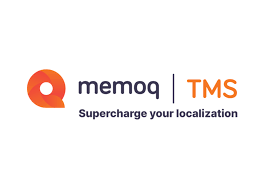
MemoQ is another powerhouse in the professional translation industry, offering a comprehensive cloud-based solution that caters to agencies, enterprises, and individual translators. Its cloud platform is designed for collaborative work, efficient project management, and high-quality output, making it an excellent choice for marketing teams with sophisticated translation needs for Urdu to English translation online.
Why MemoQ Cloud for Marketers?
- Powerful Translation Environment: MemoQ Cloud provides a rich online environment for translators, integrating translation memory, terminology management (TermBases), and style guides. This ensures that every piece of marketing content, from product descriptions to blog posts, adheres to brand voice and uses approved terminology consistently.
- Robust MT Integration: It offers seamless integration with various leading machine translation engines, including custom MT models. This allows marketers to leverage the speed of AI translation while maintaining control over quality through post-editing by human linguists.
- Collaboration and Workflow Management: MemoQ Cloud is built for teamwork. Marketing teams can collaborate with in-house linguists, freelance translators, and reviewers in real-time, streamlining the entire localization workflow. Project managers can assign tasks, track progress, and manage deadlines effectively.
- Quality Assurance (QA) and Reporting: The platform includes advanced QA functionalities to check for linguistic errors, tag mismatches, and terminology inconsistencies, ensuring that the final Urdu to English translation online is of the highest possible quality. Comprehensive reporting also helps analyze translation costs and turnaround times.
- File Format Versatility: MemoQ Cloud supports a vast array of file formats, making it easy to translate everything from website HTML files and software strings to marketing PDFs and multimedia scripts without complex conversion processes.
Pros: Comprehensive CAT tool features; excellent for collaborative environments; strong MT integration with human oversight; robust QA and reporting; versatile file support.
Cons: Can be complex to set up and master initially; designed for professional translation workflows, which might be more than needed for simple tasks; subscription costs.
Source Link: MemoQ Cloud
5. Smartling: The Translation Management System for Enterprise Content
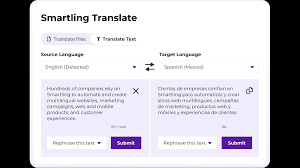
Smartling positions itself as an enterprise-grade Translation Management System (TMS) that helps brands streamline their localization efforts from end-to-end. It’s not just a translation tool; it’s a comprehensive platform designed to manage the entire global content lifecycle, making it exceptionally valuable for large marketing organizations with diverse content pipelines.
Why Smartling for Marketers?
- Advanced Integration with Marketing Tech Stacks: Smartling excels at integrating with a wide range of marketing and content platforms, including popular CMS (like WordPress, Drupal, Adobe Experience Manager), e-commerce platforms (Shopify, Magento), and marketing automation systems. This allows for automated content ingestion and publication, greatly reducing manual effort for Urdu to English translation online and other languages.
- Contextual Translation Interface: Smartling provides translators with in-context views of the content they are translating (e.g., seeing a website page as they translate its text). This ensures that translations are not just linguistically correct but also visually and contextually appropriate, which is vital for marketing design and user experience.
- AI-Powered Translation Automation: The platform intelligently routes content through machine translation, human translation, or a combination (PEMT), optimizing for speed, cost, and quality based on the content type and requirements. It uses AI to determine the best translation approach.
- Robust Translation Memory and Glossary Management: Like other professional tools, Smartling offers advanced features for managing translation memories and glossaries, ensuring consistent terminology and reducing translation costs over time.
- Analytics and Reporting: Smartling provides detailed analytics on translation costs, turnaround times, and quality metrics, allowing marketers to optimize their localization strategy and demonstrate ROI.
- Built for Scale and Complexity: Designed for high-volume content, Smartling can handle complex workflows, multiple language variations, and diverse content types across global marketing campaigns.
Pros: Comprehensive TMS; deep integration with marketing tech; in-context translation; intelligent automation; robust analytics; built for enterprise scale.
Cons: Significant investment (designed for large businesses); potentially overkill for small businesses or individual marketers; requires dedicated setup and management.
Source Link: Smartling
Key Considerations When Choosing Your Online Translation Partner
Selecting the right tool for your Urdu to English translation online needs goes beyond just comparing features. Marketers must consider several critical factors to ensure the chosen solution aligns with their strategic goals and operational realities.
Accuracy and Nuance: The Core of Effective Communication
The primary goal of any translation is accurate communication. For marketing, this extends to capturing nuance, tone, and cultural appropriateness.
- Evaluate Samples: Don’t just take a vendor’s word for it. Request sample translations of your specific content types (e.g., ad copy, website text, social media posts) from Urdu to English.
- Test for Idioms and Context: See how well the tool handles common Urdu idioms or culturally specific phrases when translating them into English. Does it provide a literal, nonsensical translation, or does it capture the intended meaning?
- Human Review Capability: Regardless of the tool’s sophistication, always consider the option for human post-editing for critical marketing content. A tool that facilitates this process seamlessly is invaluable.
Scalability: Growing with Your Global Ambitions
As your marketing efforts expand into new territories or your content volume increases, your translation solution must keep pace.
- Volume Handling: Can the tool efficiently process large volumes of text or integrate with systems that generate content continuously?
- Language Expansion: Does the platform easily support adding more languages beyond Urdu to English translation online if your global strategy expands to other markets?
- Team Collaboration: If you have a growing marketing team or work with external linguists, does the tool offer features for collaborative workflows and project management?
Integration with Existing Marketing Stacks: Streamlining Workflows
A standalone translation tool, no matter how powerful, can create workflow bottlenecks. The best solutions integrate seamlessly with your existing marketing technology.
- CMS Integration: Can it pull content directly from your Content Management System (e.g., WordPress, HubSpot) for translation and push it back once complete?
- Marketing Automation/CRM: Is there an API or direct integration with your marketing automation platform (e.g., Marketo, Salesforce Pardot) to localize emails, landing pages, and lead nurturing sequences?
- File Format Support: Does it handle the file formats you typically use for marketing materials (e.g., HTML, XML, JSON, InDesign, common document types)?
Cost-Effectiveness: Balancing Quality and Budget
Translation costs can quickly escalate. Understand the pricing models and evaluate the ROI.
- Free vs. Paid: While free tools like Google Translate are useful for quick checks, professional marketing demands paid solutions that offer greater accuracy, features, and security.
- Subscription Models: Understand the pricing tiers, per-word rates, and any hidden costs. Does it offer a tiered structure that suits your current needs but can scale up?
- Translation Memory Savings: Tools with Translation Memory (TM) functionality can significantly reduce costs over time by reusing previously translated segments. This is a major factor for long-term budget planning for your Urdu to English translation online projects.
Security and Data Privacy: Protecting Your Brand’s Information
Marketing content, especially pre-launch campaign details or proprietary product information, can be highly sensitive.
- Data Handling Policies: Scrutinize the tool provider’s data privacy policies. Where is your data stored? Who has access to it?
- Compliance: Does the tool comply with relevant data protection regulations (e.g., GDPR, CCPA) if you operate in those regions?
- Confidentiality Agreements: Ensure that the service provider offers robust confidentiality agreements.
Customization: Tailoring to Your Brand’s Unique Voice
Your brand has a unique voice, specific terminology, and a defined style. Your translation solution should respect and uphold this.
- Glossaries/Termbases: Can you create and enforce custom glossaries of preferred terms and brand-specific jargon (e.g., how a particular product feature should always be translated from Urdu to English)?
- Style Guides: Does the tool allow you to upload or integrate a style guide to ensure consistency in tone, formatting, and grammar across all translated content?
- Custom MT Engines: For ultimate control, can you train a custom machine translation engine with your own data to make it learn your brand’s specific linguistic patterns? This is an advanced feature but highly beneficial for enterprise marketers.
By carefully evaluating these considerations, marketers can make an informed decision, selecting a translation partner that not only facilitates accurate Urdu to English translation online but also acts as a strategic enabler for global market conquest.
Maximizing Your Translation Investment: Beyond the Tool
Acquiring a state-of-the-art online translation tool is only half the battle. To truly unlock its potential and maximize your return on investment, marketers need a strategic approach that encompasses process, people, and continuous improvement. This is where a commitment to online learning becomes a differentiator, empowering marketing professionals to wield these powerful tools effectively.
Strategic Planning: Context, Culture, and Audience First
Before a single word is translated, a clear strategy is paramount.
- Understand Your Target Audience (Again): Beyond just language, understand the cultural nuances, values, and consumption habits of your Urdu-speaking audience. What resonates with them? What are their pain points? This knowledge will inform the translation style and ensure that the message, post Urdu to English translation online and then back to Urdu again (if it’s being reviewed), truly connects.
- Define Campaign Objectives: What do you want this translated content to achieve? Is it brand awareness, lead generation, sales, or customer support? The objective will dictate the level of translation quality and creative adaptation required.
- Contextual Briefing: Provide your translation team (human or AI-assisted) with comprehensive briefings. Include the purpose of the content, target audience, desired tone, and any cultural sensitivities. This context is invaluable for achieving a truly effective translation.
The Indispensable Role of Human Expertise: Review and Post-Editing
While machine translation is powerful, human oversight remains crucial for high-stakes marketing content.
- Native Speaker Review: Always have a native speaker of the target language (in this case, Urdu if you’re translating from English, or English if you’re translating from Urdu) review and edit the machine-translated output. This step is critical for catching cultural errors, awkward phrasing, and ensuring the brand voice is intact.
- Transcreation for Creative Content: For slogans, taglines, and highly creative ad copy, consider transcreation, a process where a copywriter adapts the message culturally and creatively, rather than just translating it literally. This might involve completely rewriting content to achieve the same emotional impact in a different culture.
- Consistency through Collaboration: Ensure that your human reviewers and translators are aligned with your brand’s style guides and glossaries. Collaborative features within tools like Smartling or MemoQ Cloud facilitate this.
Continuous Improvement: Learn, Adapt, Evolve
The landscape of language and marketing is constantly changing. Your translation strategy should be agile.
- Build and Refine Translation Memories (TMs): Every validated translation should be added to your TM. This asset grows over time, ensuring consistency, improving machine translation quality, and significantly reducing future translation costs and turnaround times.
- Maintain and Expand Termbases/Glossaries: Regularly update your glossaries with new product names, industry terms, and approved translations. This ensures consistent terminology across all your marketing communications.
- Feedback Loops: Establish a system for collecting feedback on translated content from your target audience or local market teams. Use this feedback to refine your TMs, glossaries, and translation processes.
Investing in Knowledge: Online Learning for Global Marketers
To truly master the art of global marketing and leverage these sophisticated tools, continuous online learning is essential. Marketers should actively seek opportunities to deepen their understanding of localization, cross-cultural communication, and the underlying technologies.
- Localization Best Practices: Explore online learning courses on localization strategies, global SEO, and international content marketing. Platforms like Coursera, edX, and LinkedIn Learning offer excellent programs in these areas. You might find specialized courses on navigating different market dynamics or even “language learning online” to gain a basic appreciation for the linguistic nuances of your target market.
- AI and Machine Learning Fundamentals: Understanding the basics of what is machine learning and online machine learning can help marketers better utilize and troubleshoot their translation tools. There are many AI courses online free that can provide a foundational understanding.
- Language Specifics: Even a basic understanding of Urdu grammar or common phrases, perhaps through english learning online resources that also touch on Urdu speakers’ common challenges, can significantly enhance your ability to review and appreciate the quality of your Urdu to English translation online outputs. This goes beyond mere vocabulary; it’s about cultural insight.
- Platform-Specific Training: Many of the professional tools mentioned (e.g., SDL Trados, MemoQ, Smartling) offer their own online learning platforms or training modules. Investing time in these will ensure your team can fully utilize the advanced features.
By embracing this holistic approach – strategic planning, human oversight, continuous improvement, and a commitment to free online learning and professional development – marketers can transform their translation investment into a powerful engine for global growth.
The Future is Multilingual: Your Marketing Edge
The journey beyond Google Translate is not merely about finding a better tool; it’s about embracing a paradigm shift in global marketing. It’s about recognizing that language is not just a barrier to overcome but a bridge to build, a cultural insight to leverage, and a powerful asset for deep connection with audiences worldwide.
For marketers today, the ability to deliver engaging, accurate, and culturally resonant content in languages like Urdu is no longer a niche capability but a core competency. The proliferation of sophisticated Urdu to English translation online tools, powered by cutting-edge AI and supported by robust human-in-the-loop workflows, means that the power to conquer new global markets is more accessible than ever before.
By thoughtfully selecting the right professional translation solutions, integrating them seamlessly into your marketing operations, and continuously refining your approach through online learning and strategic execution, you can unlock unprecedented opportunities for growth. Move confidently into the multilingual future, where your brand’s message resonates authentically, drives engagement, and converts across every linguistic boundary. Your marketing edge in the global arena begins with the precision of your translation strategy. Embrace the tools, master the process, and watch your brand thrive across borders.


